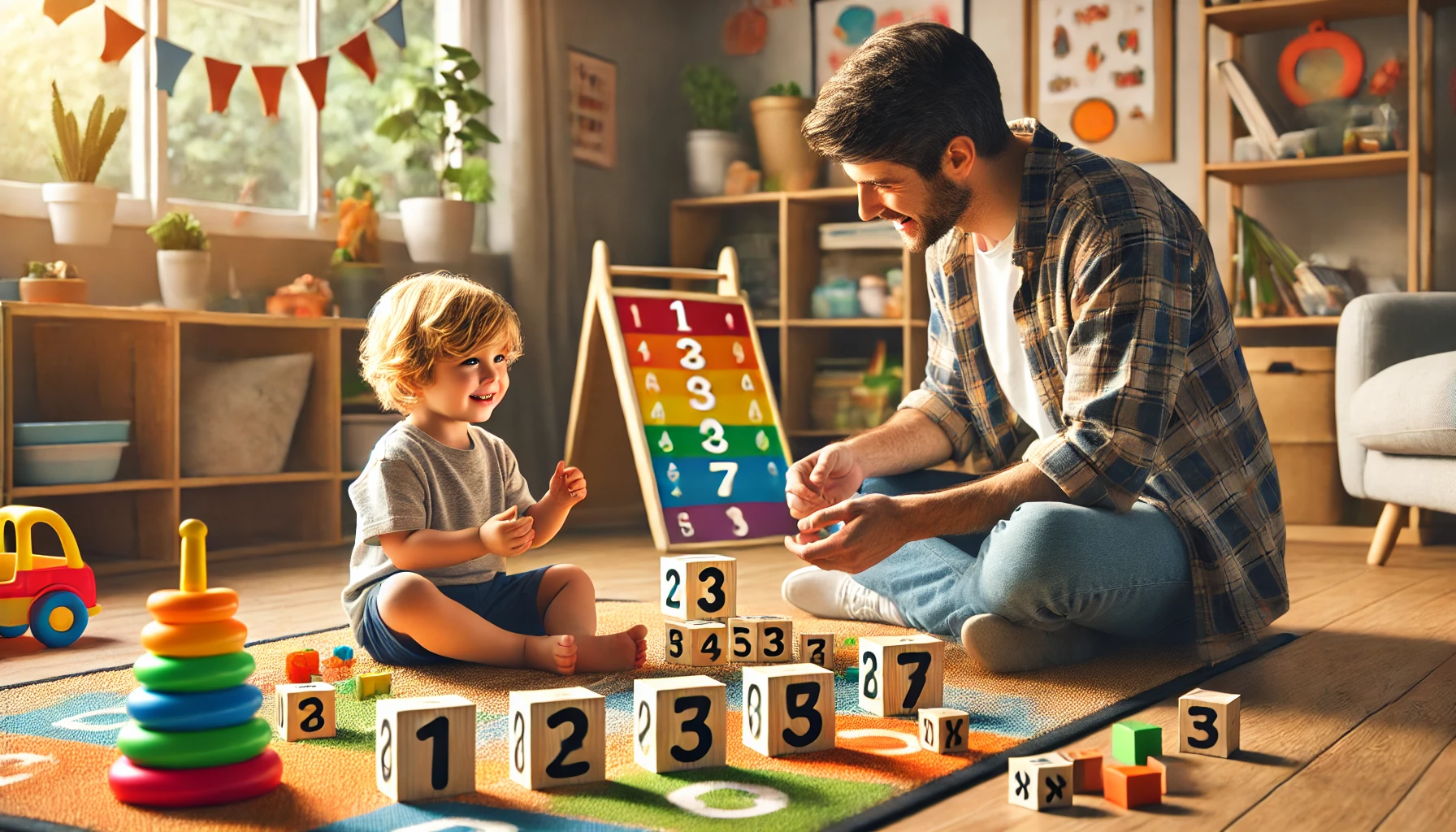Teaching numbers and counting to young children doesn’t have to feel like a formal math lesson. In fact, the most effective learning at this age often happens through play. By turning everyday activities and games into playful learning moments, children can develop a strong foundation in numeracy without even realizing they’re learning.
Here’s how to make counting fun, natural, and part of your child’s daily routine at home.
Why Learning Through Play Works
Children between the ages of 2 and 6 learn best through exploration, interaction, and repetition. Playful learning:
- Keeps children engaged
- Builds understanding through real-life examples
- Encourages active participation
- Helps children retain concepts longer
Counting, number recognition, and basic math concepts can be introduced early — and reinforced in fun ways.
Everyday Activities That Teach Counting
1. Count During Daily Routines
Use everyday moments to count out loud with your child:
- Climbing stairs (“1, 2, 3…”)
- Setting the table (counting plates or forks)
- Putting away toys (group and count them)
This repetition helps children associate numbers with actions and objects.
2. Snack Time Counting
Turn snack time into math time:
- Count apple slices or crackers
- Sort snacks by color or shape and count how many of each
- Ask, “How many do you have left?” as they eat
It’s a delicious way to make numbers meaningful.
Fun Games to Teach Numbers
3. Number Hunt
Write numbers on sticky notes and place them around the house. Ask your child to find them in order, or match them with objects (e.g., “Find number 3 and bring me three toys”).
Skills learned: Number recognition, quantity matching
4. Hopscotch Counting
Use masking tape or chalk to make a hopscotch board. As your child hops, they call out the numbers.
Skills learned: Number sequencing, gross motor coordination
5. Lego Counting Towers
Ask your child to build towers with a specific number of blocks (e.g., “Build a tower with 5 blocks”). Compare sizes and count together.
Skills learned: Counting, comparing quantities
6. Dot Sticker Numbers
Write a number on a paper and have your child place that many dot stickers on it. Or use buttons, pom-poms, or other small items.
Skills learned: One-to-one correspondence, fine motor control
Songs and Rhymes That Teach Counting
7. Use Classic Counting Songs
Songs are a powerful way to reinforce numbers. Try:
- “Five Little Ducks”
- “One, Two, Buckle My Shoe”
- “Ten in the Bed”
- “This Old Man”
Add finger movements or props to make it more interactive.
8. Clap and Count
Clap a rhythm and count each beat out loud. Change the speed or add jumps for a physical version!
Skills learned: Rhythm, sequencing, number recall
Simple Crafts and DIY Tools
9. Homemade Number Flashcards
Create flashcards with numbers and matching dots or stickers. Let your child decorate them for fun!
10. Number Puzzles
Cut a paper plate in half like a puzzle. On one side, write a number; on the other, draw dots. Your child matches them.
11. Counting Beads or Pasta
Use string and colored pasta or beads. Ask your child to make a necklace with a specific number or pattern.
Role-Playing and Pretend Play Ideas
12. Play Store
Set up a pretend shop with price tags. Use fake coins or bottle caps and have your child “buy” items by counting.
13. Cooking Together
Let your child measure ingredients, count spoonfuls, or crack a certain number of eggs. It’s real-life math in action!
Books That Support Number Learning
Here are some simple books you can use to reinforce numbers:
- Chicka Chicka 1, 2, 3 by Bill Martin Jr.
- Ten Black Dots by Donald Crews
- Pete the Cat and His Four Groovy Buttons by James Dean
- Counting Kisses by Karen Katz
Reading together builds not only number sense but also language and bonding.
Tips for Parents
- Be patient — repetition is key at this age
- Celebrate small wins with smiles and encouragement
- Use visuals: charts, drawings, number lines
- Mix it up: vary activities to keep things fun
- Don’t push — if a child seems frustrated, take a break and try again later
Turning Numbers Into Everyday Fun
When counting and numbers become part of playtime and routines, learning feels effortless. Children begin to understand that numbers are everywhere — not just on worksheets, but in the world around them. By making counting a joyful experience, you’re laying the groundwork for future math success in the most natural way possible.
